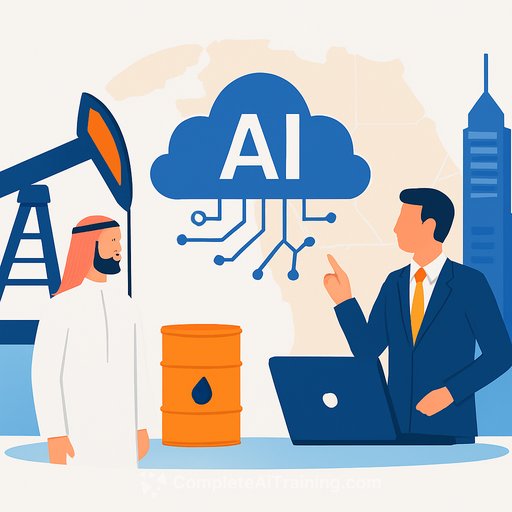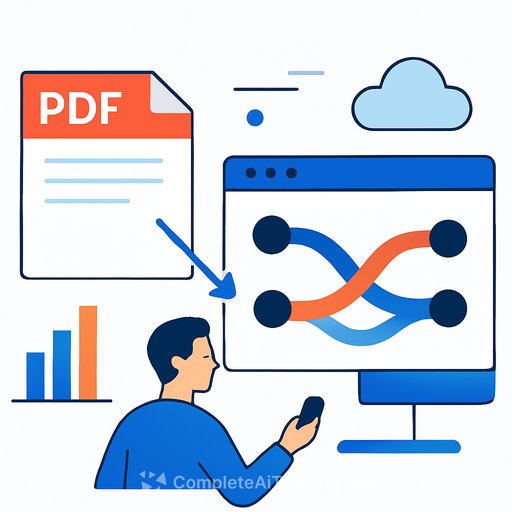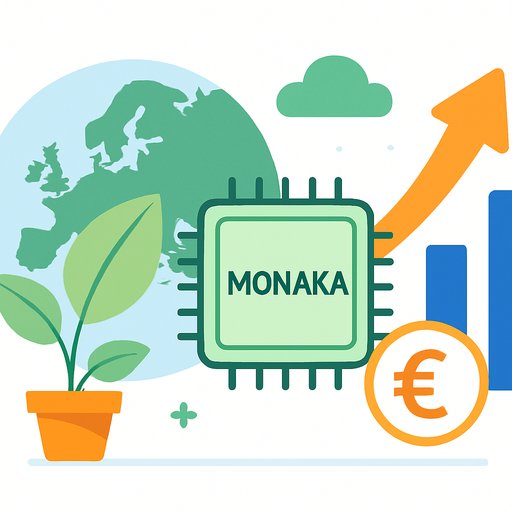Saudi Arabia's AI Bet: Humain, 6 GW of Compute, and a Sprint to Third Place
Saudi Arabia is redirecting oil power into compute power. The vehicle: Humain - a state-backed operating company building data centers, cloud services, large language models, and AI applications at national scale.
Launched by Crown Prince Mohammed bin Salman in May ahead of Donald Trump's state visit to Riyadh, Humain is positioned as the core engine of the country's AI strategy. The goal is clear: become the world's third-largest AI market after the United States and China.
Why this matters for builders
For engineering leaders and developers, this isn't just macro talk. It's a signal about where cheaper compute, new enterprise AI stacks, and partnerships may open up over the next 2-5 years.
Think GPU supply, regional cloud options, and agent-first enterprise workflows - all moving faster because the energy and capital are already in place.
Humain's Build: Capacity, Partners, and Capital
Humain plans to scale to six gigawatts of data-center capacity by 2034. That's an enormous footprint if even half of it lands on GPU-heavy workloads.
Partners include Nvidia, AMD, Amazon Web Services, Qualcomm, and Cisco. This week, Humain announced a $3 billion deal with Blackstone to build data centers inside the Kingdom.
As CEO Tarek Amin puts it: "We have an advantage in Saudi Arabia. Look at the incredible energy grid of this country, one that doesn't require a company like Humain to build substations and deliver power to a data center. That means I've saved 18 months."
Humain One: An AI-First OS for Work
Humain also introduced Humain One - an AI-driven operating system that lets users direct a computer by voice or text instead of clicking through icons. Internally, the company runs core functions on AI agents across HR, finance, legal, operations, and IT.
The claim is blunt: only one person sits in HR; the rest runs on agents. If true at scale, expect enterprise buyers to ask vendors hard questions about agent orchestration, observability, and audit trails - not just model performance.
Context: Vision 2030, Economics, and Regional Competition
Saudi Arabia is pushing into the final phase of Vision 2030 amid pressure from lower oil prices and delays in mega-projects like Neom. AI is positioned as a growth engine for the broader economy.
Regionally, the United Arab Emirates is moving in parallel with G42 and the Stargate UAE project - a massive data center initiative reportedly valued around $500 billion with involvement from OpenAI, Oracle, Nvidia, and Cisco.
Amin's stance on competition: support the democratization of AI - and keep the model simple. "Humain is not a holding company. We are an operating company."
What this means for engineering teams
- Compute access: Six gigawatts signals potential new GPU supply from Nvidia/AMD within the region. Expect price pressure and new allocation channels.
- Cloud mix: With AWS in the partner list, watch for regional services, data residency guarantees, and managed AI offerings tuned for local compliance.
- Agent-first ops: If Humain One gains traction, enterprise IT will demand agent policy controls, permissions, SOC visibility, and secure tool-use sandboxes.
- Networking and storage: Cisco involvement hints at high-throughput fabrics and low-latency networking - plan for NVLink/RoCE-aware architectures and fast tiered storage.
- Talent markets: New demand for MLOps, data engineering, infra reliability, and kernel-level performance work around GPUs and interconnects.
- Procurement reality: Track lead times on H100/H200-class accelerators, power and cooling SLAs, and export-control constraints.
Execution questions worth tracking
- Build velocity: How quickly can data centers come online with reliable power, cooling, and networking for dense GPU clusters?
- Energy economics: Will cheap, stable energy translate into materially lower training/inference costs for customers?
- Ecosystem: Are there developer grants, startup credits, or public datasets to seed adoption?
- Governance: Clarity on data residency, model policy, and risk frameworks for regulated industries.
- Interoperability: How "open" is Humain One for third-party agents, tools, and enterprise integrations?
Near-term outlook
If Humain executes on even a fraction of the 6 GW target with credible partners, the region becomes a serious option for training and serving large models. For teams priced out of US and EU compute, this could shift the map.
Watch the next FII cycle for procurement details, GPU availability, and timelines. The operating question is simple: will this translate to accessible capacity for builders, or stay locked inside a few strategic programs?
For ongoing skills and tooling updates across LLM ops, agent frameworks, and cloud AI, explore curated resources at Complete AI Training.
Your membership also unlocks:






